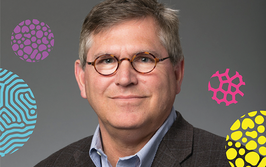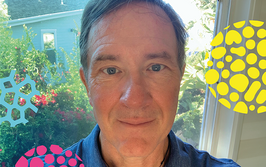What Comes After the “Eureka” Moment?
Increased focus is needed when it comes to the implementation of promising technologies in appropriate application areas

We’ve always done it this way. Spend enough time convincing someone to try something new, and you will undoubtedly hear this phrase like a broken record. Yet, as analytical scientists, we pride ourselves in working on new developments at the cutting edge. Every scientist dreams of the day they will have that eureka moment – that moment when they discover a revolutionary new way of doing something. The next step, where we often fall short, is in following through to get our reluctant stakeholders to buy in. How do we take that new idea and convince people that it’s worth pursuing?
Our academic backgrounds breed a culture of innovation and discovery. High impact journals only publish papers with high novelty. Awards are given for innovation in many fields of analytical chemistry. Plenary speakers are chosen based on revolutionary ideas. This early recognition is all incredibly exciting, but don’t we also have an obligation to guide these innovations to fruition in applications that can benefit from them?
As a forensic chemist, I have had to think a lot about how I define my work. I believe that fundamental studies should be paired with rigorous applications-based research for the end user. I oppose the idea that I have to be either an analytical chemist or a forensic scientist (although I have always been a fan of wearing different hats for different occasions!). I spin my work depending on which audience I’m presenting to – but it often comes with criticism.
In the analytical world, I am told my work is too applied; in the forensic world, too fundamental. But working at the interface of these disciplines is what makes our work exciting, and should be celebrated, rather than criticized. It is the bridge needed to shift our fundamental work in separation science to the reality of implementation in forensic investigation.
The questions I often sit up thinking about are:
- Why do we not work harder to “marry” fundamental science with applied science and practical usage?
- Why is applied research off-limits for most grants awarded in analytical chemistry?
- Are we addicted to working on the “cutting edge” and neglecting our duty to help end users?
- Are we doing enough to follow through on what we promise?
We have to make implementation easier. We have to make data and best practices available. We can’t expect that the end user is going to do this for themselves, especially when they have a functioning (yet perhaps not optimal) approach at present. People are reluctant to adopt new methods due to the time taken, even if that comes with significant analytical benefits.
I would argue that this culture of novelty and working on the “cutting edge” can impede the adoption of novel techniques. We opt for publishing exciting proof-of-concept studies over rigorous validation and inter-laboratory studies, and pursue peer-reviewed publications and conference proceedings over contributing to developing standardized methods. Meanwhile, end users tell us that their existing approaches are “good enough” – no need to try something new. Industries are also applying analytical instrumentation in an increasingly “black box” manner, making it harder to convince them to invest time and money to reap the benefits of new techniques.
My field of comprehensive two-dimensional GC (GC×GC) is no exception. The technique has been around since the 1990s, yet adoption in industries that could benefit still lacks. The road to adopting new technology is not a swift one, especially in my area. There are many hurdles, and a lot of reluctance (rightly so) to adopt something new for fear it will not be admissible in court. I have to think creatively about how to market GC×GC as “worthwhile.”
On the analytical side, “we’ve always done it this way” is not a valid excuse to ignore new technologies that provide improved answers to important questions. However, as analytical chemists, we owe it to the end users to prove our technology can work for their application, and to help them find easier ways to implement it. This endeavor requires work, and not the exciting, cutting-edge kind. It requires lengthy studies (repeating work many times, validating methods, intra-laboratory studies, inter-laboratory studies), many of which will be turned away by journals due to lack of novelty.
Working in analytical chemistry research is exciting, and thinking that we might uncover the next big innovation is probably part of what drew us to the field in the first place. But it is what comes after the “eureka” that determines how we use our expertise, knowledge, and discoveries to actually impact society in a meaningful way. Though this might be less glamorous, it is our duty and obligation to do it well.
Assistant Professor, Chaminade University of Honolulu, Hawaii, USA.

















